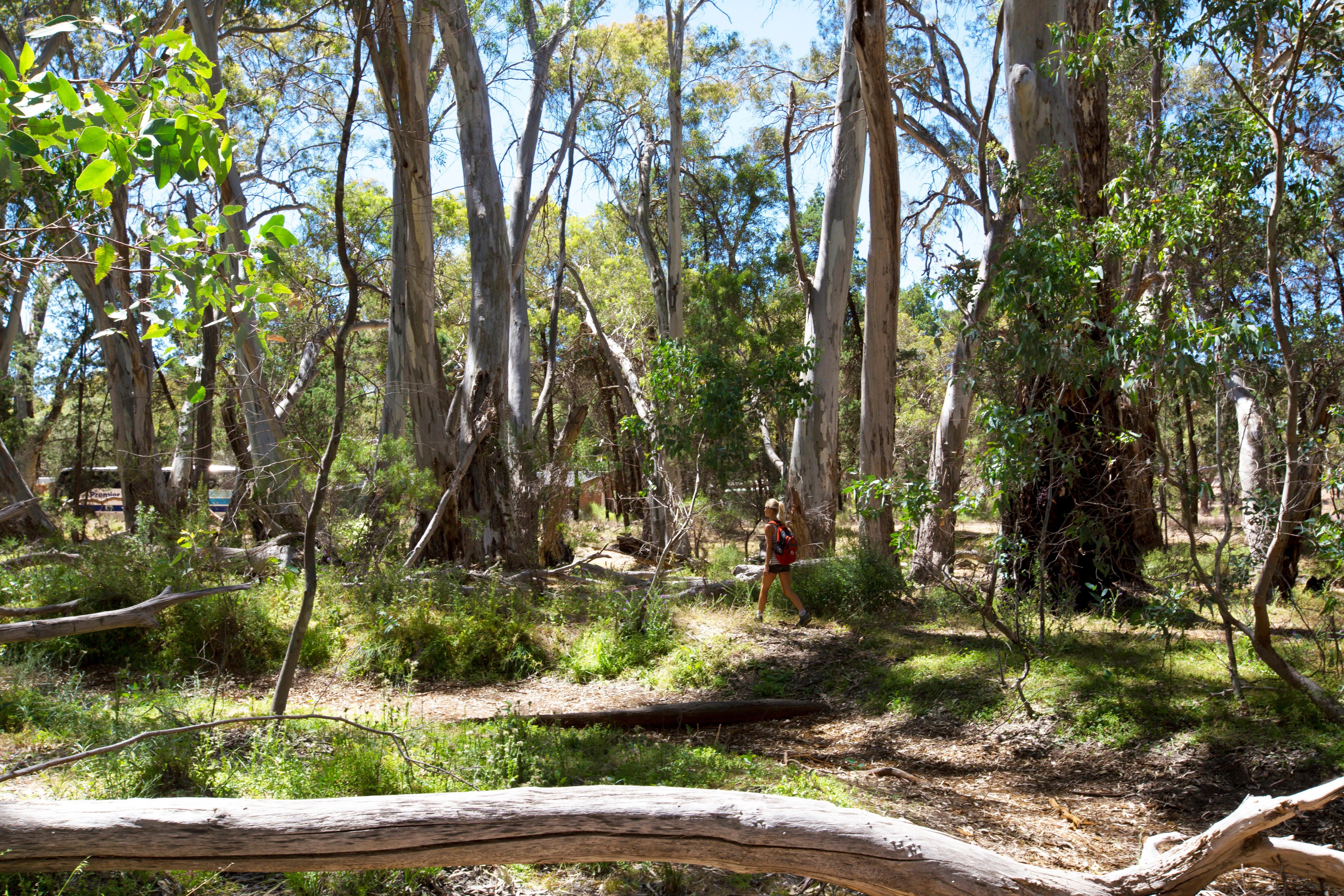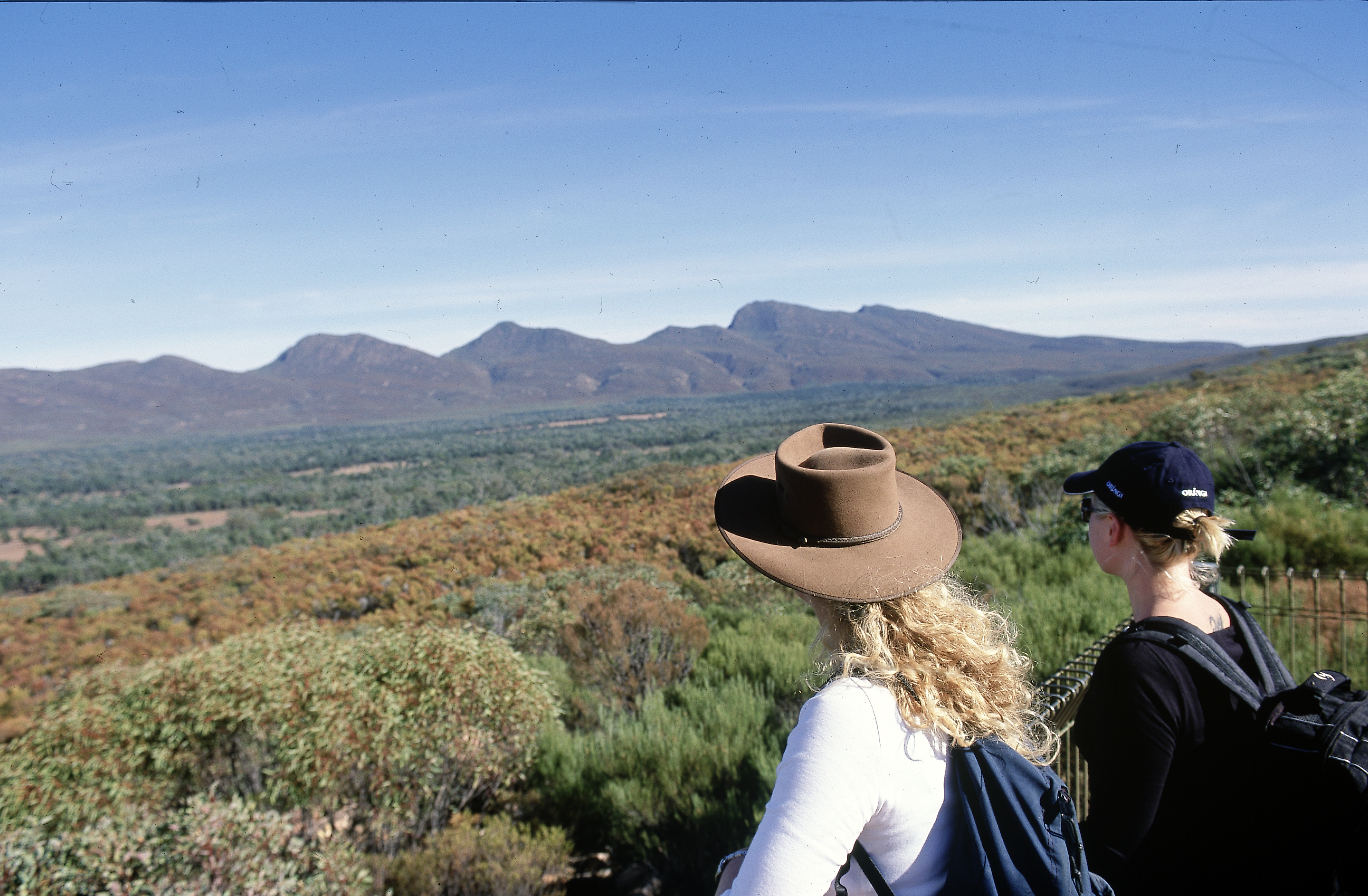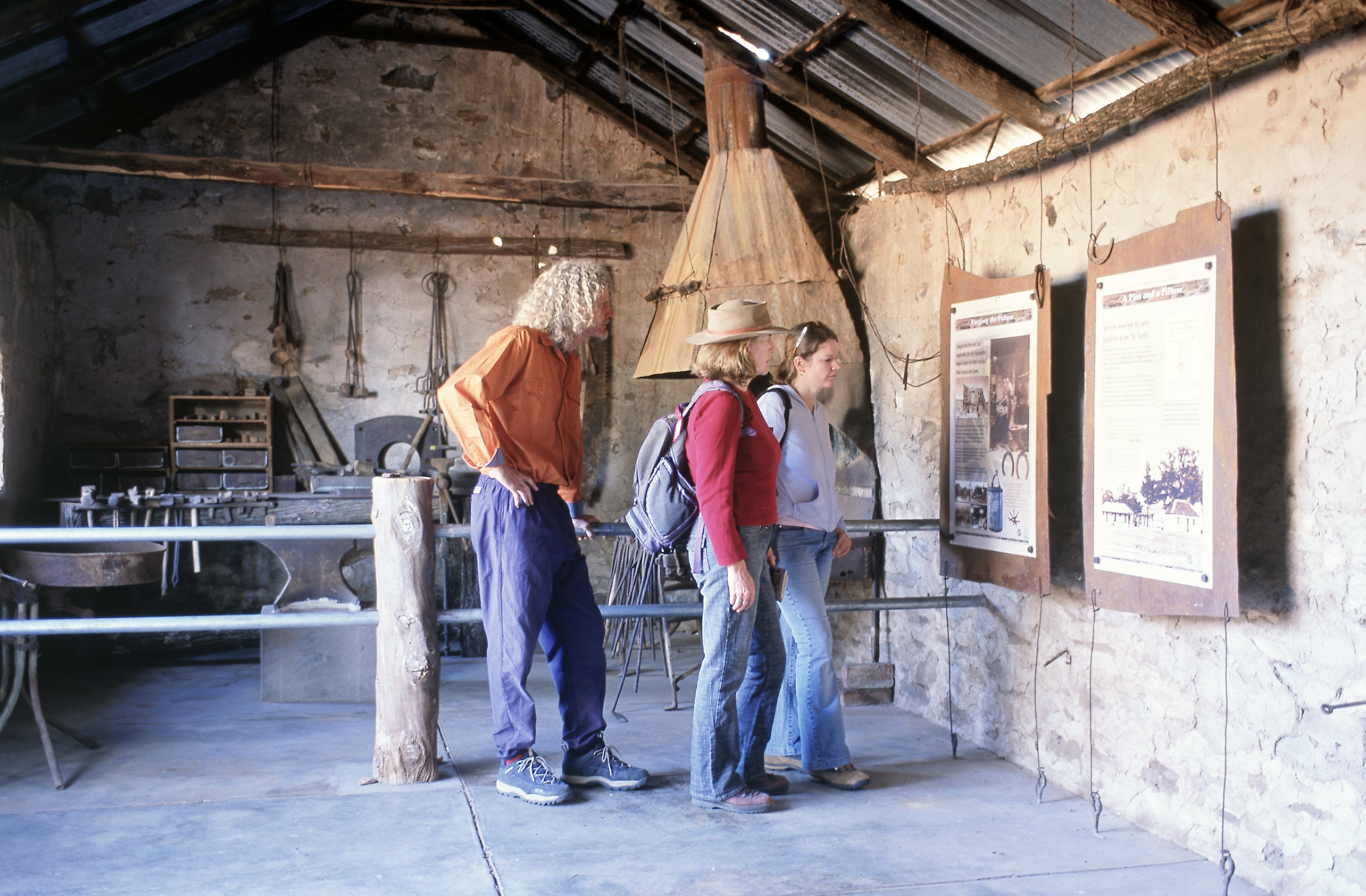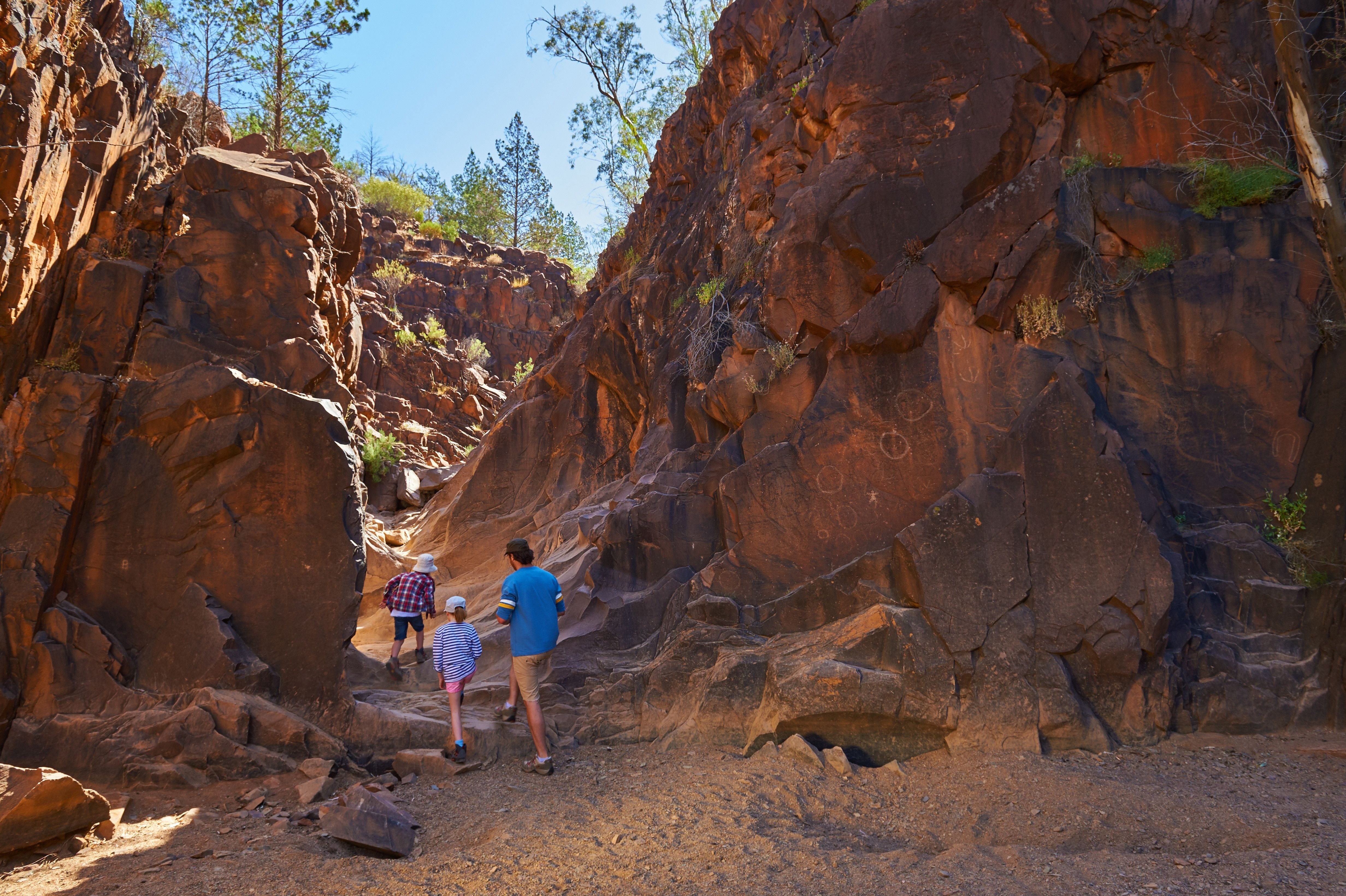
7 family-friendly walks to enjoy in Ikara-Flinders Ranges

These walks are all within the Ikara-Flinders Ranges National Park, and can all be enjoyed from a holiday base at Wilpena Pound Resort or Campground. The furthest begins about an hour’s drive away, and others can be started on foot from the Wilpena Pound Visitor Information Centre.
Boom and Bust Trail
Distance: 3.0km, 1.5 — 2 hours
Keen to learn more about the local plants and animals? The Boom and Bust trail examines how native flora and fauna have adapted to the cycles of rain and drought in this beautiful but sometimes unforgiving landscape. Start near the Wilpena Pound Visitor Centre and take the main route along Wilpena Creek through the Pound Gap, which is the natural entrance into the ancient mountainous enclosure of Wilpena Pound. Take the turnoff onto the Boom and Bust loop trail and follow the interpretive signs. The Mount Ohlssen Bagge hike also starts here (a longer and steeper walk), but the Boom and Bust trail loops back. You’re guaranteed to return with a keen eye for spotting natural living wonders from the grand to the miniscule.
The walk is mostly shady and flat, with some uneven ground, and suitable for most fitness levels. It’s particularly lovely in spring when wildflowers bloom.

Hills Homestead Walk
Distance: 6.6km, 2 hours
Early white settlers thought that Wilpena Pound, with its naturally enclosed boundary of mountains, would be ideal for farming stock and crops. But Mother Nature had other ideas, as you’ll learn on this walk.
Starting from the Wilpena Pound Visitor Centre, take the main track along Wilpena Creek through Pound Gap, into Wilpena Pound itself. The walk along the creek, which is usually running with at least a small amount of water, is pleasantly shady and full of native vegetation including towering River Red Gums. Once you reach the point where the shuttle bus drops people off, you can choose from two ways to reach Hills Homestead:
Via Sliding Rock: the flatter and shadier option is to walk between the creek and a large slab of quartzite rock.
Via Top Track: climb up this track for some views of the peaks of the Pound.
Either way, you’ll end up at Hills Homestead, a modest stone cottage which has been preserved and restored, with signs telling the history of the ill-fated farming venture inside Wilpena Pound. Toilets and picnic tables make this a great place to stop for a rest and a snack before heading back. However if there’s still life in your legs, you can head up the Wangara Lookout trail (below). This is highly recommended for more agile walkers, because the views are magnificent.

Wangara Lookout Hike
Distance: 600m, steep (full walk is 7.8km return from Wilpena Pound Visitor Centre)
Start behind the Hills Homestead inside Wilpena Pound, after walking in through Pound Gap (see Hills Homestead Walk above).
There are actually two lookouts, both facing the same direction across the Pound and offering spectacular views. The second one has the advantage of extra height.
The lower lookout is about 300m of moderately hard climb but well worth it for the views. The second lookout is about another 300m up. Whether you stop at the first or make it to the top, you’ll gain a great perspective on the immense size and crater-like shape of the Pound. You’ll be rewarded with views that you’d otherwise only find at the peak of a much longer and more challenging climb. Look around and see if you can identify the highest point, Ngarri Mudlanha-St Mary Peak.

Living with Land Walk, Old Wilpena Pound Station
Distance: 3.2km, 2 hour loop or shorter 1km loop
This is a flat, easy walk taking in early white settler history, well-preserved historic buildings and the involvement of First Nations people in working the land.
If you’re based near the Wilpena Pound Visitor Centre, this walk is off in the opposite direction to the Pound itself. Drive around 2.9km to Old Wilpena Station Homestead, where the walk begins, via the Hawker-Wilpena Road. The Living With Land interpretive trail explores the surroundings of the old Homestead, which ceased being a working farm in 1985.
The trail will take you to several smaller historic buildings including the Blacksmith’s Workshop, Bookkeeper’s Hut and a ‘pug and pine’ building constructed from the local native cypress pine and mud. You’ll learn about self-sufficiency, improvisation and survival, and the shared history of Aboriginal people and European settlers who came to farm the land. First Nations knowledge of the landscape, and skills of tracking and hunting, were critical to the survival of white settler enterprises in the outback.
This is a relaxed stroll in a very photogenic landscape, with plenty to keep all the family interested.

Sacred Canyon Walk
(available as guided tour only)
Distance: 2km walk after 30 min drive
This site has great cultural significance to the Adnyamathanha people and may only be visited by booking a tour with a First Nations guide.
The walk will lead you along a tree-lined creek to the site of ancient engravings on sheer rock walls. Through entertaining and informative storytelling, your guide will explain how the images were made, what they represent, and the Adnyamathanha beliefs surrounding these evocative markings. In the midst of an ancient landscape, you’ll deepen your understanding of the connection between Aboriginal people and country, stretching back tens of thousands of years and still alive today.

Bunyeroo Gorge Hike
Distance: 7.5km, 3 hours 30 mins
Bunyeroo Gorge is a wide, peaceful gum-lined gorge framed by rugged rock formations. The hike is fairly flat but you will need to cross the creek in several places. The relatively sheltered landscape with abundant vegetation and reliable water supply makes this a great spot to observe native wildlife.
The gorge is around an hour’s drive north of the Wilpena Pound Visitor Centre. It is reached by dirt road which is accessible for most cars, but some is more-or-less along a creek bed so will not be ideal after heavy rain. The road may even be closed, so check with National Parks and Wildlife staff, use your judgement and drive to conditions.
Keep your eyes peeled along this hike and you might even spot a yellow-footed rock wallaby (Andu in Adnyamathanha language), which has been brought back from the brink of extinction by the Bounceback threatened species recovery program.

Trezona Hike
Distance: 8km, 4 hours
This hike is one for the rock and fossil enthusiasts. Look out for stromatolites — evidence of some of the earliest life forms on earth — in the Trezona shale and limestone geological formation.
You’ll begin this walk at the Trezona Campground, about a 40 minute drive from Wilpena Pound Resort. It’s a loop trail which takes in part of the 1,200km Heysen Trail. Walk along gum-lined creeks, through open grassland and past ancient rock formations. Much of this trail is fairly exposed, so wear a hat and sunscreen and carry plenty of water (you were going to do that anyway, right?). Best enjoyed during the cooler months.

Be prepared, stay safe
- Visit the National Parks and Wildlife ‘Know Before You Go’ page to help you plan, pack and prepare for your trip.
- Carry enough water — there’s no guarantee there will be quality drinking water available.
- Use hats and sunscreen and carry insect repellent.
- Wear comfortable enclosed shoes.
- Check for Park Alerts.
- Talk to National Parks and Wildlife staff within the park — they will be able to help you with the most up-to-date information and personal recommendations.

The Flinders Ranges: World Heritage worthy
It’s hard to wrap your mind around, but as you walk in the Flinders Ranges, the land under your feet is over 600 million years old. It’s one of Australia’s truly magnificent landscapes. South Australia is edging closer to finalising the nomination of features of the Flinders Ranges for World Heritage listing.
The Flinders Ranges is the only place on Earth where 350 million years of near-continuous geological sequence can be seen, demonstrating the rise of a habitable planet and the dawn of animal life.
The Adnyamathanha People (meaning hills or rock people) are the traditional custodians of this diverse landscape, which is world-renowned for its wealth of natural, cultural significance, historic and scenic values.
You can learn more about what makes this region worthy of nomination, the benefits of a World Heritage listing and more over here: Flinders Ranges World Heritage nomination.